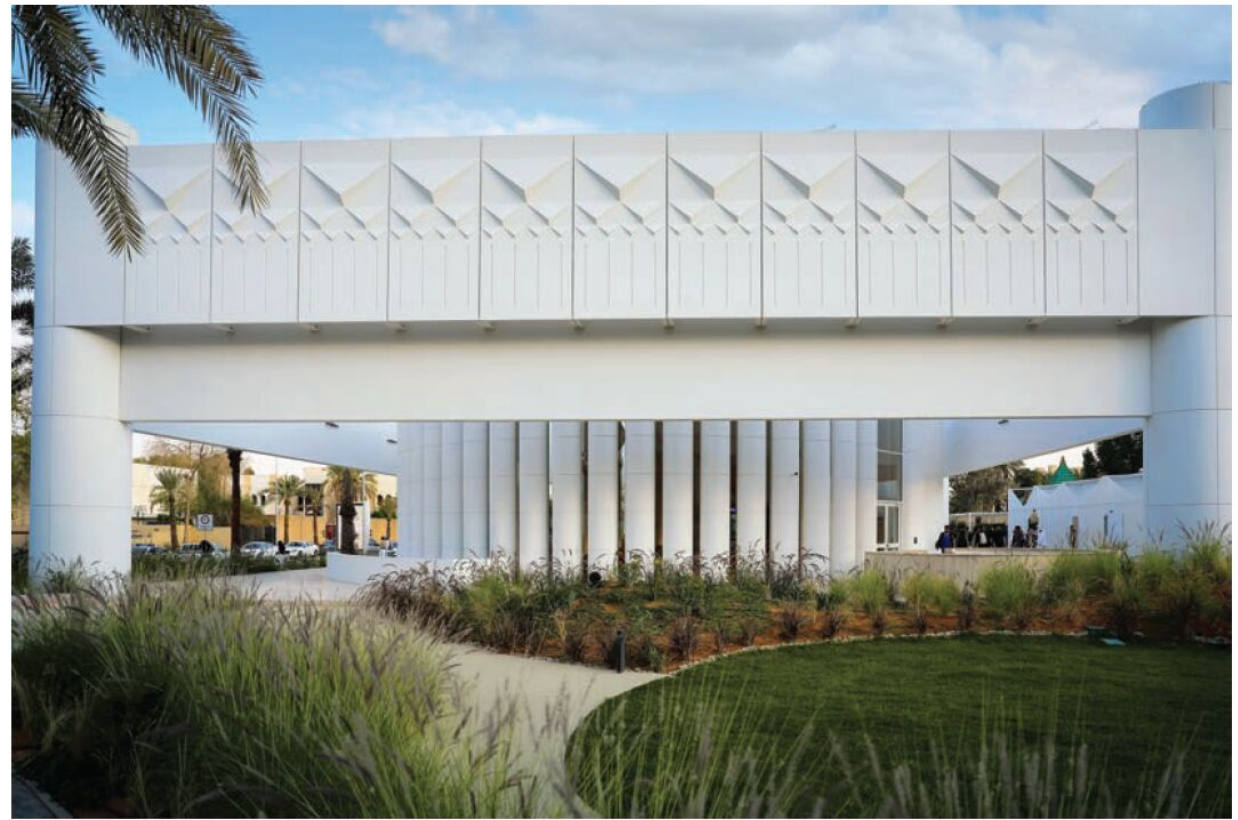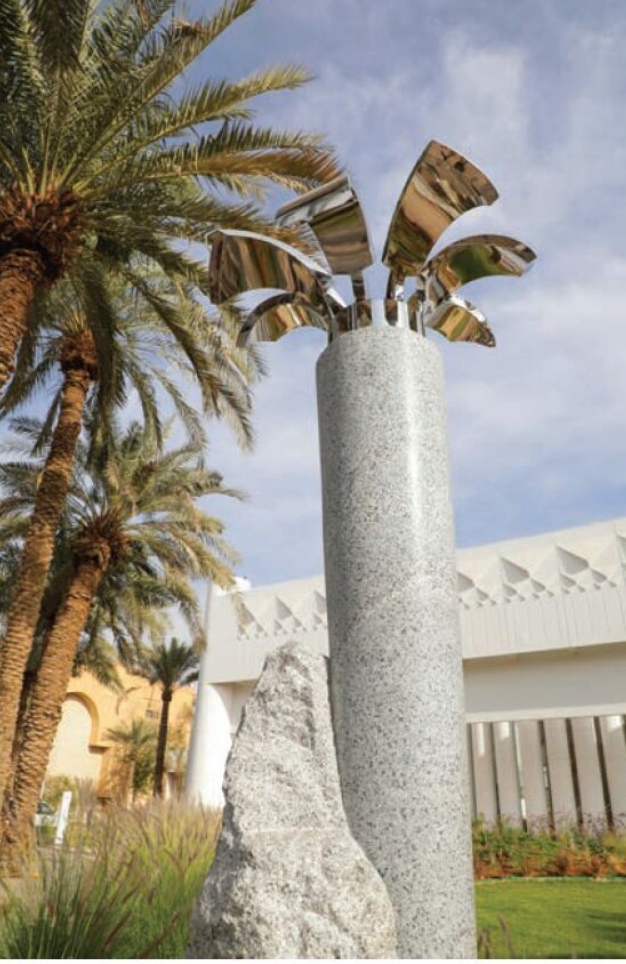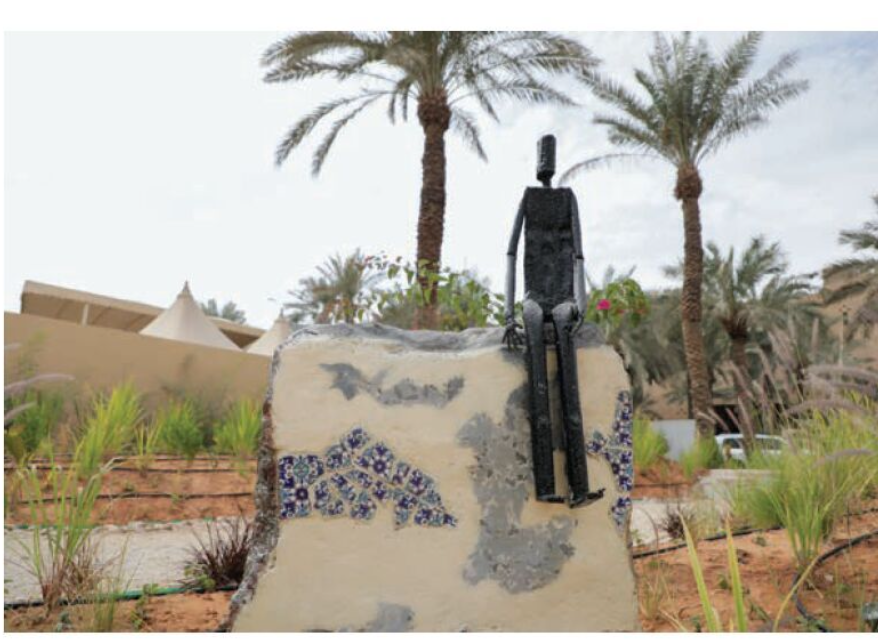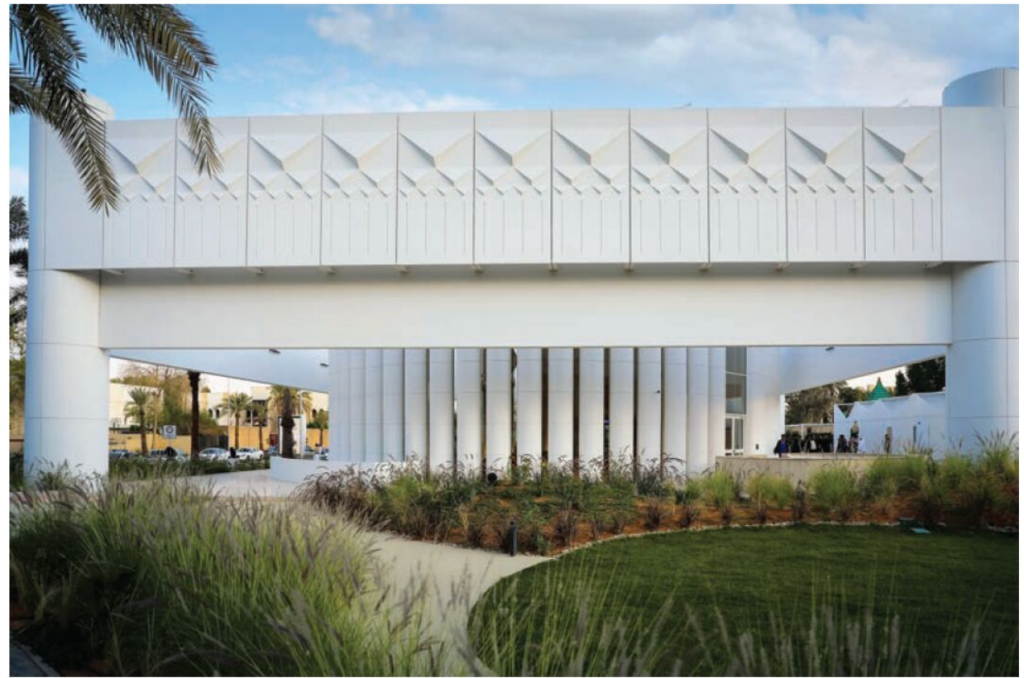Smriti Malhotra
The contemporary art scene in Saudi Arabia has experienced remarkable growth and transformation in recent years, positioning the country as a vibrant hub for artistic expression and cultural innovation. Fuelled by ambitious government initiatives, such as Vision 2030, which aims to diversify the economy and promote cultural development, Saudi Arabia has witnessed a flurry of infrastructure projects, art institutions, and creative spaces. This newfound momentum has not only propelled the emergence of local artists but has also attracted international attention, positioning Saudi Arabia as a significant player within the global contemporary arts landscape. With a blend of traditional influences and forward-thinking approaches, the contemporary art scene in Saudi Arabia offers a rich tapestry of artistic expressions, fostering dialogue, and pushing boundaries in the pursuit of creative excellence.
Recent years have witnessed a remarkable surge of development in the Saudi capital, Riyadh, as it strives to establish itself as a prominent player in the regional and international art scenes. Far from slowing down, this momentum seems to be accelerating. The government’s focus has primarily centred on the historic suburb of Diriyah, which has been designated as one of the ambitious “gigaprojects” outlined in the Vision 2030 blueprint for oil diversification.
Diriyah has become a hub for artistic endeavours, reminiscent of renowned creative districts like M50 in Shanghai or Gillman Barracks in Singapore. The district, known as JAX, features converted warehouses that now house artist studios, residencies, and a vibrant artistic community. In a significant milestone, JAX hosted the inaugural Diriyah Biennale in 2021, attracting attention and recognition from art enthusiasts worldwide.
As part of the ongoing development, renowned Jeddawi galleries Athr and Hafez, recognised for their contributions to the Saudi art scene, are planning to establish outposts in Diriyah. The Saudi Arabian Museum of Contemporary Art is also slated to open its doors soon, further enriching the cultural landscape of the area. Moreover, the upcoming Diriyah Art Futures initiative aims to create an educational and museums cluster dedicated to digital art. Notably, it will emphasise the integration of artificial intelligence (AI) and machine learning into artistic practices. The inclusion of a new media research centre within the cluster holds tremendous promise for the exploration of cutting-edge artistic expressions.
In downtown Riyadh, two significant projects are set to redefine the city’s cultural landscape. The Jack Persekian-directed Black Gold Museum is being established to honour the resource that continues to drive the nation’s progress. This museum will showcase the significance of oil and its impact on the region. Additionally, the mammoth Royal Arts Complex is under development, and upon completion, it will encompass five museums, a theatre, an outdoor amphitheater, several cinema halls, and art academies. This ambitious endeavour aims to provide a comprehensive cultural experience for residents and visitors alike.
To the east of Riyadh, the abandoned Irqah Hospital, with its storied history of treating Gulf War combatants, is undergoing a transformation into a cultural centre. Despite its rumoured haunted reputation, the space has already hosted a graffiti festival, demonstrating its potential as a vibrant hub for artistic expression. Plans are underway to repurpose the hospital and establish it as a prominent cultural destination.
The long-delayed Riyadh Metro, anticipated to open this year, will have a transformative effect on the city’s transportation system. With Riyadh’s sprawling layout and notorious traffic congestion, the metro system will provide much-needed relief and ease of navigation. Accompanying the metro launch is an ambitious public-transit art program initiated by Riyadh Art. This program aims to integrate artistic installations and interventions into the public transportation experience, enriching commuters’ journeys and bringing art to the masses.
The Misk Art Institute, while operating with varying levels of quality, continues to play a significant role in the art scene. The institute quietly supports artists and cultural initiatives, and an upcoming exhibition organised by co-curator Wassan Al-Khudairi, known for her involvement with the Hawai’i Triennale, holds great promise and anticipation.
These developments reflect Riyadh’s commitment to fostering a vibrant and diverse arts and culture sector. The city is investing in large-scale projects like the Black Gold Museum and the Royal Arts Complex, while also repurposing historical sites like the Irqah Hospital. The impending launch of the Riyadh Metro and the public-transit art program further highlight the city’s dedication to making art accessible to all. Despite challenges and varying quality, institutions like the Misk Art Institute continue to contribute to the evolving artistic landscape.
As Riyadh undergoes these transformative changes, the city is poised to become a regional cultural powerhouse, attracting artists, enthusiasts, and visitors from around the world. The art scene in Saudi Arabia’s capital, Riyadh, is undergoing a rapid wave of infrastructure development, fueled by ambitious government initiatives. However, there is a growing concern that the government’s involvement may overshadow the commercial aspect of the art market. The commercial scene remains stagnant, as galleries find it more profitable to pursue government projects rather than focusing on selling art. This situation poses significant challenges for artists who struggle to establish sustainable practices without consistent sales. Moreover, the rumoured dissolution of Jeddah’s independently funded arts organisation, SAC, and the uncertain future of the Kingdom’s only art fair, Shara, add further uncertainty to the landscape. Artists question how they can sustain their livelihoods once the support of grants, awards, and commissions diminishes.
Amidst this context, it is heartening to witness the emergence of new and more modest projects in Riyadh. One notable example is Fenaa Alawwal, a cultural centre launched by the Ministry of Culture in December. Housed in a circular building located in the prestigious Diplomatic Quarter, the centre’s premises were once occupied by Saudi Arabia’s first commercial bank, which held the country’s gold reserves. Its inaugural exhibition, “Memory Deposit,” curated by Tala Al Ghamdi, focused on the concept of currency. Despite the perception of a potentially unfocused program, the exhibition proved to be surprisingly captivating. Notable works included Alia Ahmad’s sprawling imagined landscape that seamlessly intertwined natural elements found on Saudi banknotes with Basmah Felemban’s installation of resin fish. Additionally, a flickering projection skilfully wove together a fishy tale from a nearby wadi with the artist’s own family’s migration history. The exhibition space, complemented by a coffeeshop, an art and design library, and soon, a restaurant, embraces the notion of a “third space” with great enthusiasm.

Beyond the exhibition space, Fenaa Alawwal boasts a sculpture garden showcasing primarily new commissions. Among these artworks are a welded figure reminiscent of Slenderman by Saddek Wasil and Ugo Rondinone’s “Magic Mountains” (2016-). Notably, a captivating palm tree sculpture stands as a surprising juxtaposition—an amalgamation of a corporate office block lobby and a palm tree, with stainless steel fronds adorning a limestone column, created by Nagi Farid. The charm of Fenaa Alawwal lies in its unassuming nature and lack of ambitious grandeur, which paradoxically contributes to its appeal. It serves as a refreshing contrast to the blockbuster projects taking place elsewhere in Riyadh, hinting at a quieter and more introspective maturation of the art scene.

Courtesy: Saudi Ministry of Culture, Riyadh
In summary, Riyadh’s art scene is currently experiencing a whirlwind of infrastructure development, albeit accompanied by concerns regarding the balance between government-led initiatives and the vitality of the commercial art market. Artists face the challenge of sustaining their practices without sufficient art sales, and the potential demise of independent art organisations and art fairs further adds to their predicament. However, the emergence of projects like Fenaa Alawwal signifies a shift towards more intimate and innovative endeavours. The sculpture garden, with its commissioned artworks, creates an environment that fosters artistic expression. Ultimately, Riyadh’s art scene appears poised for a quieter and more thoughtful evolution, embracing a diverse range of artistic pursuits and offering opportunities for artists to thrive in this transforming landscape.

(Installation view, Fenna Alawwal, Riyadh)
Courtesy: Saudi Ministry of Culture, Riyadh






